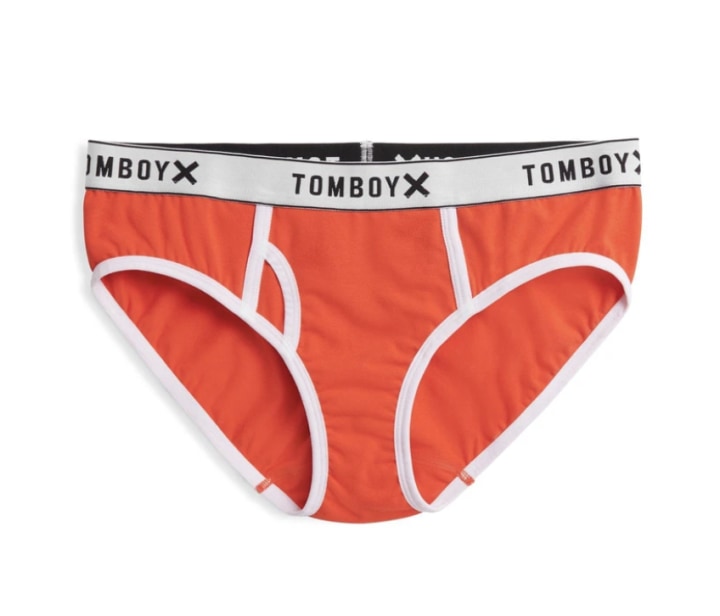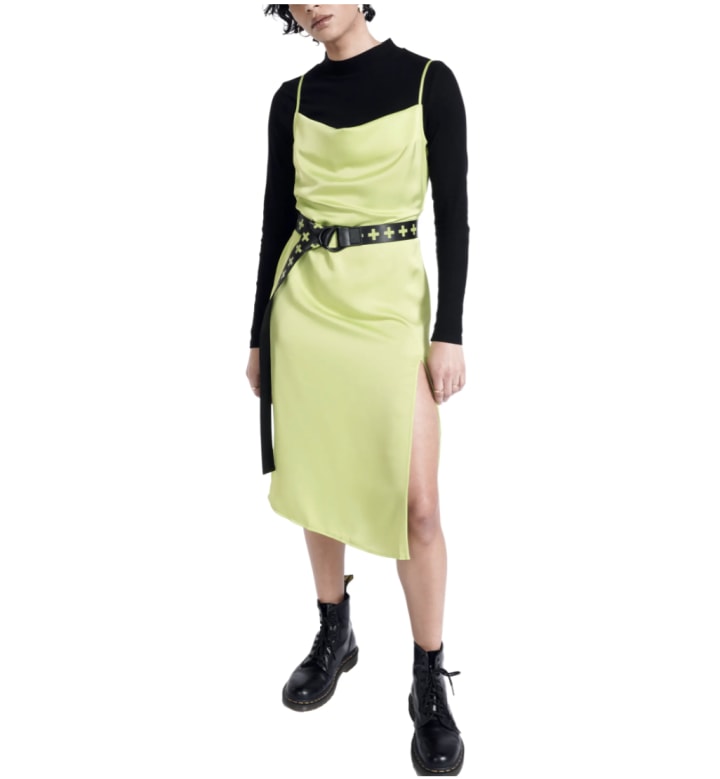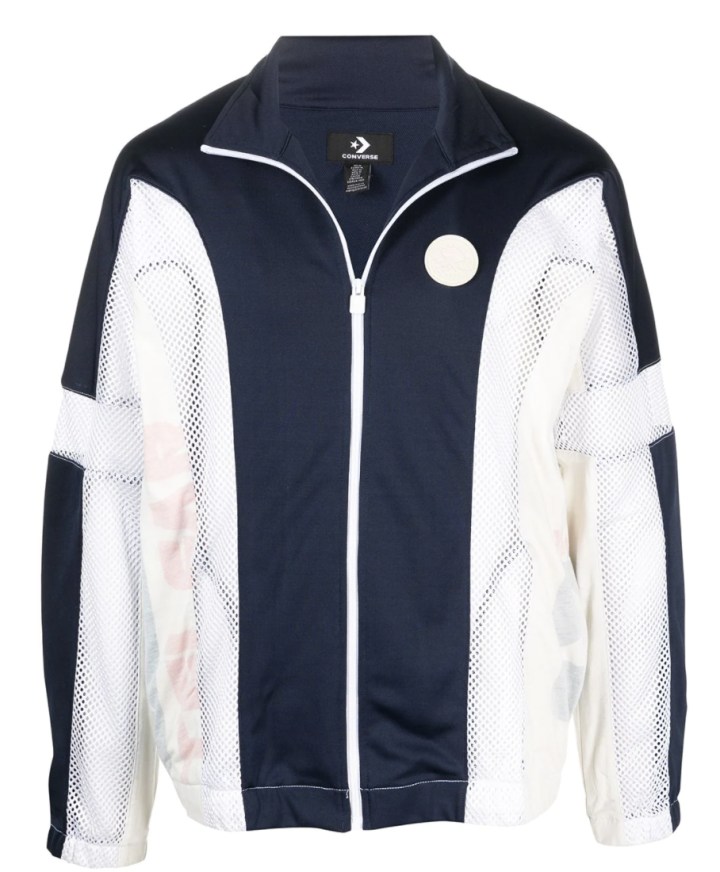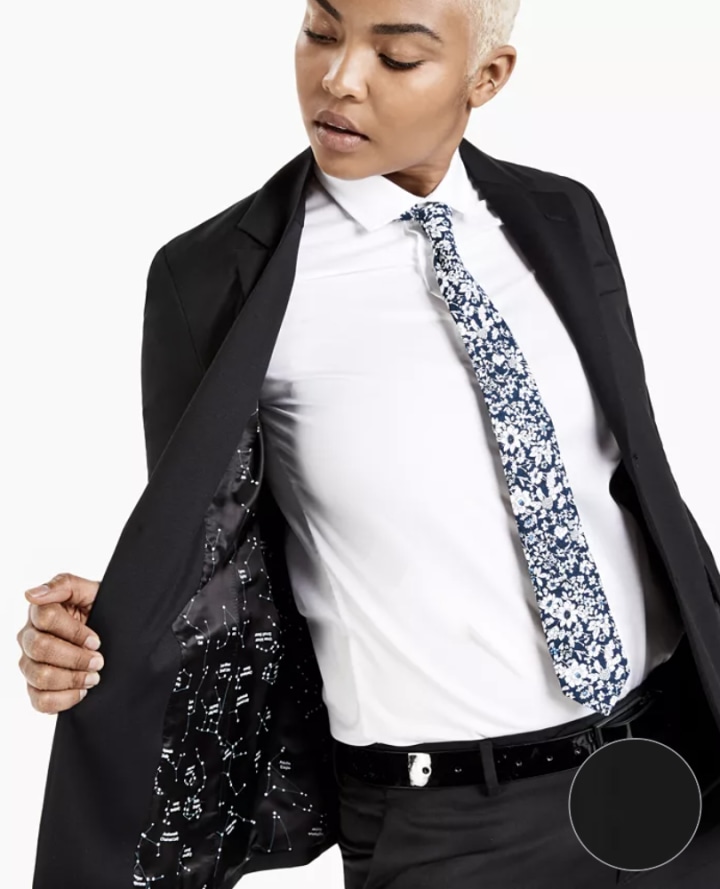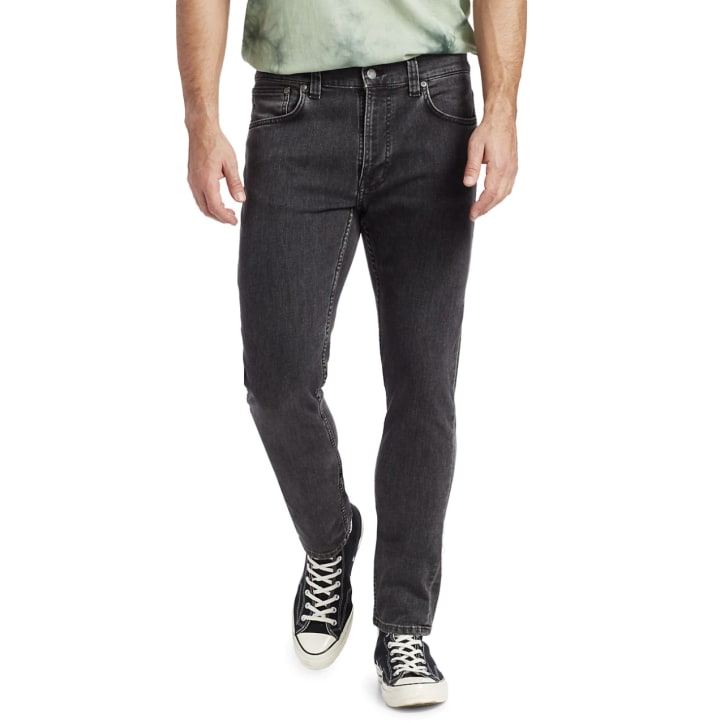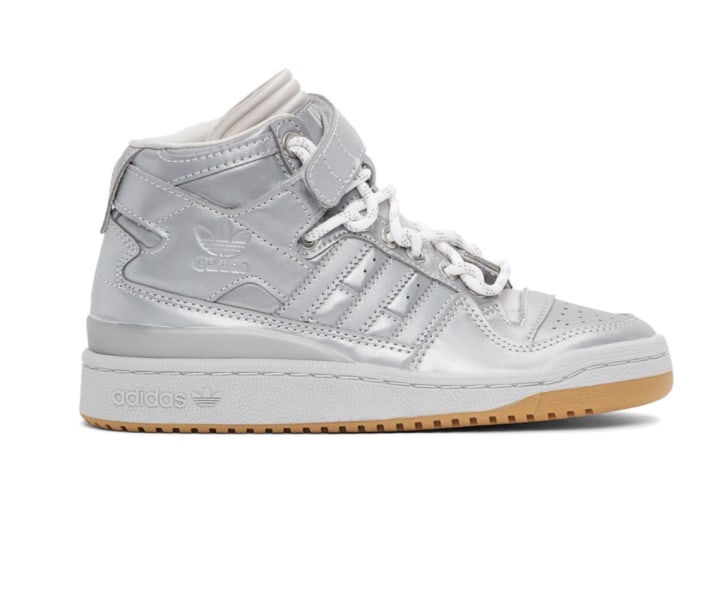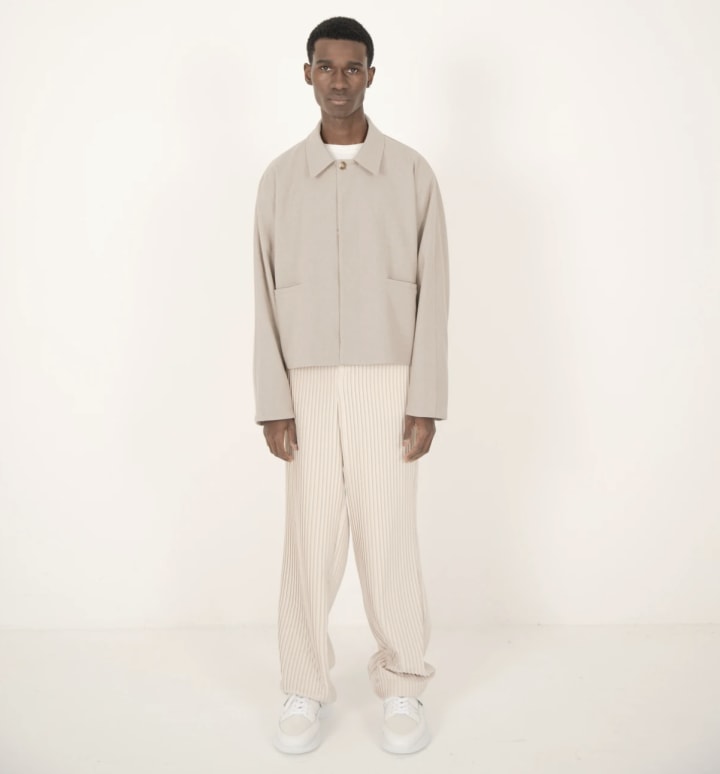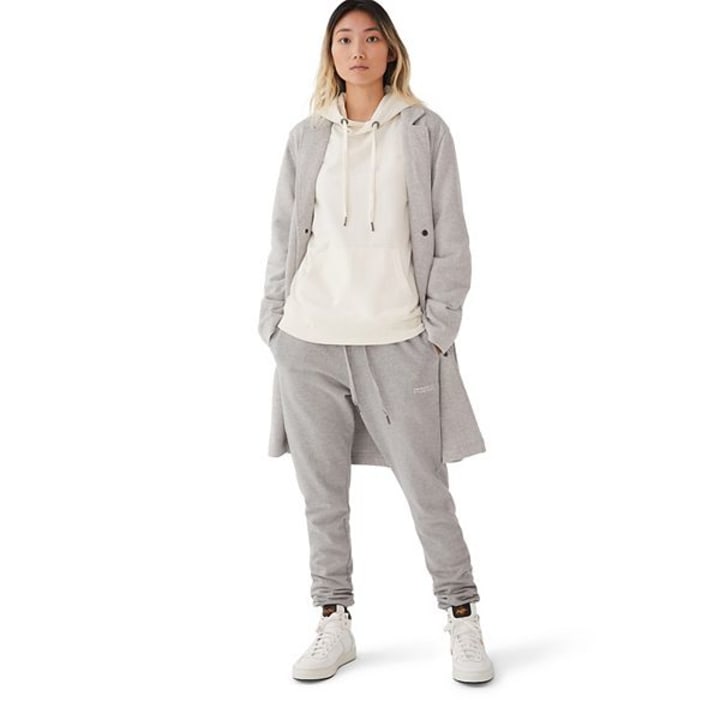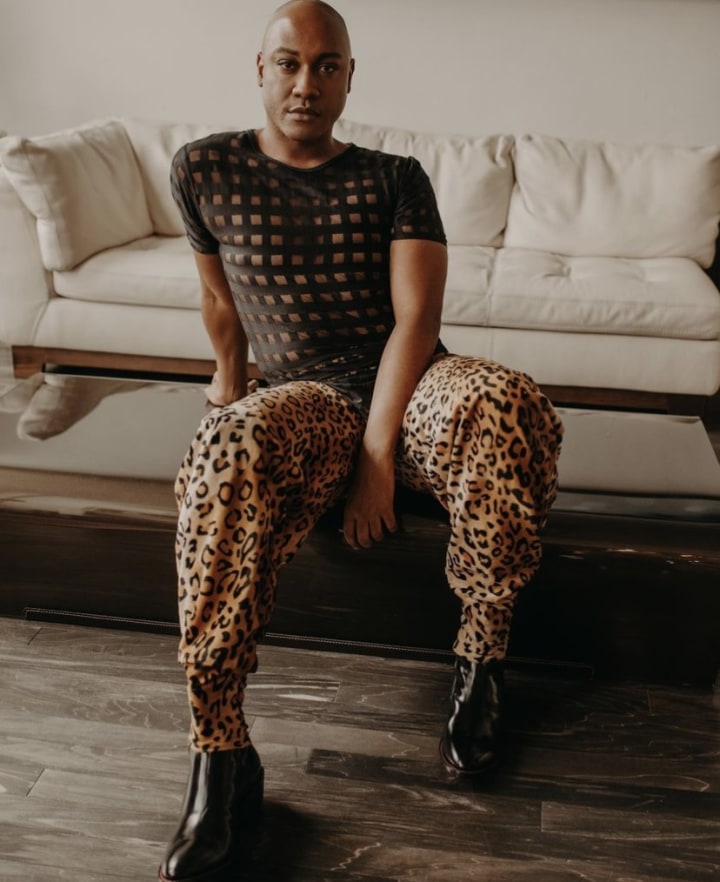Gender-fluid fashion is undefined.
It can mean different things depending on whom you ask, lacking a single, established construct. In fact, fashion industry experts say a truly gender-fluid outfit isn’t an outfit at all. It’s more a state of mind, fashionably speaking.
“Gender-fluid or gender-inclusive clothing can be any clothing, in theory,” said Nick Paget, a senior analyst at World Global Style Network (WGSN), a global trend forecasting company that analyzes consumer shopping behavior. “The notion that clothing as an expression of our personality belongs to one gender or another is the social construct that needs disassembling.”
SKIP AHEAD Best gender-fluid collections to shop / Defining gender-fluid clothing / The gender-fluid history
In the past decade, fashion brands have increasingly produced gender-fluid collections to meet consumer demand: In 2019, 56 percent of Gen Z consumers shopped “outside their assigned gendered area,” according to Rob Smith, founder of the “gender free fashion” brand Phluid Project.
You might see these collections under monikers like gender-neutral, androgynous, unisex, non-binary and so on. But experts say such initiatives, even when well-intentioned, often fall victim to performative activism. For one, many of those retailers that offer gender-fluid collections still separate their store offerings by gender. What’s more, these pieces tend to collapse gender expression into neutral colored and baggy sweats or T-shirts, experts told us.

“I would say that gender-fluid dressing, like unisex dressing before it, is often self-fashioned and self-constructed,” explained Jessica Glasscock, a former researcher at the Metropolitan Museum of Art’s Costume Institute and a lecturer at the Parsons School of Design. “[That] those fashion designers engaged with it and contribute to the visibility of the identity is wonderful, but I don't know if they are leading the charge.”
However, the notion of gender-fluid clothing is popular and shoppers do increasingly search for these collections (and around the concept itself). So if you’re looking to find some of these collections, you may get turned around by the many marketing campaigns claiming gender-fluidity for clothes that are anything but. To help guide your shopping and decipher the sometimes amorphous universe of these clothing collections, we spoke to fashion historians, gender scholars and even brands themselves, from global juggernauts like Adidas to smaller purveyors like TomboyX.
I think this term is still under construction, much like the ‘unisex’ label was at the end of the 1960s.
Jessica Glasscock, lecturer, Parsons School of Design
So, what is gender-fluid clothing?
Gender-fluid clothing has no agreed-upon definition in the fashion industry — it’s easier to explain its purpose. In essence, gender-fluid fashion isn’t limited by the traditional “menswear” and “womenswear” binary. Instead, the idea is that any given outfit completely disregards the association between pants and men, skirts and women and so on. In fact, some experts say gender-fluid clothing has little, if anything, to do with the brands, designers and retailers that create them. Instead, they argue, any piece of apparel can be gender-fluid if its wearer so chooses.
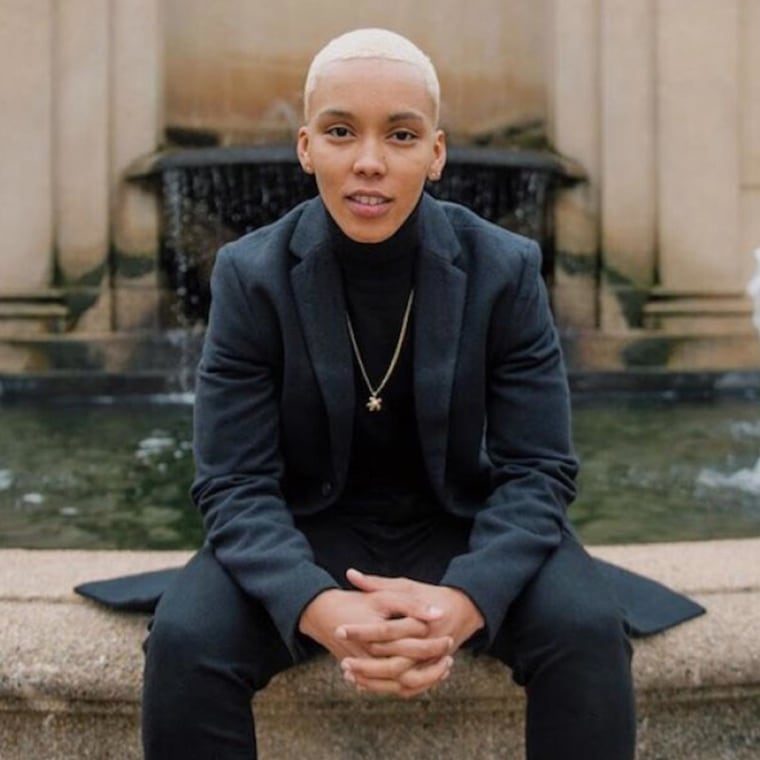
“I think about a place that sells jeans, like Levi's: If I went in and am just looking for a certain cut and a certain size, I would go for that cut and size whether or not it said ‘men’s’ or ‘women's’ over it,” said Nalo Zidan, a Black masculinities scholar and a designer for Yazi Clothing. “It's because I'm looking for a particular fit to my body to help me express my sense of style. A designer's focus should be getting the clothes on bodies to be right in relation to sizing.”
The gender-neutral fit
Brands that place special attention on fit — and refrain from splitting their collections into genders binaries — show genuine interest in their consumers, according to some experts. For example, Zidan referenced TomboyX, where the fit and sizing process is key to the brand’s identity. Fran Dunaway initially started the company when she couldn’t find comfortable boxers for herself — TomboyX offers “gender neutral” undergarments.

“A lot of times, companies start with Zero or Size Two, and then they use an algorithm to grade,” explained Dunaway, noting how one design spec informs another spec via some calculation or another. “Rather than just using an algorithm, we brought real customers in and real fit models and measured on different body types.” TomboyX’s “fit-tested on all body types” approach means the company fits undergarments on the bodies of “cis-female, cis-male and all of the different genders and a spectrum of identities” and compiles the data to create their sizes. By deemphasizing gender, they may better embody what it means to be a gender fluid company, Zidan told us.
To execute this fit method, TomboyX “reaches out to people in the community” and pays them to come in and wear their clothes. “We spend a good six months back and forth with our pattern maker, bringing real people in of varying sizes, and then tweaking the designs,” Dunaway said.
This practice isn't necessarily common, said Lynn Boorady, MD, Head of Oklahoma State University’s design, housing and merchandising department. “Most companies are used to a proportional grading system in which if you grade the bust by 1,” you grade the waist and hips by the same proportion each time,” she explained.
It turns out if you get the fit and the quality right and you use the right fabrics, it works for any body and every body.
Fran Dunaway, Founder, TomboyX
Simply put, this means most fashion brands will use a computer-generated formula based on traditional male and female proportions to size, a gendered approach to clothing design — experts consistently note the importance of sizing specifically in regard to gender-fluid garments. But not all retailers are forthcoming about what's behind collections in the space. When we asked British fashion retailer ASOS about their sizing process and base patterns for their “unisex” collection COLLUSION, they acknowledged that “size inclusivity is important to use to be able to offer product to a broad range of our customers,” but declined to comment further. For brands like TomboyX, a mainstay value is asserting that "gender expression is not an afterthought," Dunaway emphasized
“It's the initial thought. It's how we rolled out of the gate," Dunaway said. "It turns out if you get the fit and the quality right and you use the right fabrics, it works for any body and every body.”
Best gender-fluid collections to shop
If you’re interested in gender-fluid clothing but don’t know where to start, we’ve compiled a list of brands to consider based on what experts told us and our own research into the space — this is not a comprehensive list — gender-fluid clothing can be anything you determine it to be, as experts told us. But if you decide to do your own search for “gender-fluid” garments, Zidan advises consumers to first research before purchasing.
“I would advise everyone to check their about page, search the company to learn about their values and pay close attention to how they market the products,” Zidan said. “A company that is invested in gender-inclusive clothing will also be inclusive of all genders, so I particularly wouldn't be interested in a brand whose idea of representation was still limited to the binary of man and woman only.”
Examples of this include not only trans and non-binary models, but also designers, Zidan elaborated. One way to do this is simply Googling the brand’s executive team or checking the employees listed on the company LinkedIn to see how diverse the company is. This way you can tell if their external marketing initiatives match their internal hiring practices. Alternatively, if you want to look into a brand’s LGBTQ+ workplace inclusion initiatives, you can search the company in The Human Rights Campaign Corporate Equality Index, which pulls data for its annual report.
TomboyX Iconic Briefs
TomboyX is best known for these odor-resistant, anti-bacterial briefs that come in a range of colors and sizes, from XS to 6X. Made from Oeko-TEX 100 certified cotton, the briefs are free from chemicals that are toxic to humans including PFOS and PFOA chemicals. Based on reviews from over 1,700 shoppers, the briefs maintain a 5-star average.
“We kind of flip the whole fashion idea of ‘wear our stuff and you'll be cool,’” Dunaway said. “We actually think you're cool the way you are and we just want to make a product that makes you feel comfortable and confident with whoever that is.”
The company also makes First Line Leakproof Underwear for lighter period days and Adaptable Bras for post-mastectomy or modest coverage.
BP. + WILDFANG Satin Slipdress
Last month, Nordstrom collaborated with fashion brand Wildfang to produce a “gender-fluid” collection. Ranging from XXS to 4X, the collection includes jumpsuits, button-ups, blazers and more. Accessibility and affordability are crucial to WILDFANG’s brand identity and this collaboration with Nordstrom was no different, as all pieces featured are under $100.
Five percent of the total sales from the collection will be donated to Year Up, a nonprofit organization that provides career opportunities for Black, Latinx and queer communities. This satin dress has a side slit, adjustable straps and is also available in Navy Pinstripe.
TELFAR X Converse Track Jacket
Telfar, the “unisex” brand known for their highly coveted “Bushwick Birkin” bags that are almost never in stock, now has a collaboration with Converse. Founder Telfar Clemens has been designing unisex clothing since 2002 and unlike other brands, doesn’t separate his clothing into “menswear” and “womenswear,” instead grouping all clothes under “apparel.” In the collection with the sportswear giant, Telfar reinterprets classic ‘70s Converse designs to offer a variety of sneakers, tees and tanks.
Featuring a color-block panel design, this track jacket has front zip fastening and the converse logo embellished on the front. Made from 100 percent polyester, the zip jacket is machine washable.
Kirrin Finch Black Blazer
Brooklyn-based couple Laura Moffat and Kelly Sanders Moffat founded Kirrin Finch to meet the public’s demand for menswear-inspired apparel that fits a range of female and non-binary bodies. The inspiration for the business was born out of frustration that they couldn’t find button up shirts that fit their bodies. “Not being able to find clothes that matched our inner core left us feeling like we were not able to fully be ourselves,” Moffat shared.
Kirrin Finch’s bestselling black suit blazer is made from 100 percent Italian wool and lined with a playful constellation pattern. It has two exterior flap pockets and an interior welt pocket. You can wear the jacket alone or pair it with their black vest and pants.
Nudie Jeans Lean Dean Slim-Fit Jeans
If you’re looking for jeans that are made “unisex,” consider Swedish denim company, Nudie Jeans. They organize jeans from tightest to loosest and mix “men’s” and “women’s” styles with no separation. They also have a free repair policy where you can drop off your jeans at a one of the repair shops or receive a free repair kit to fix it yourself.
One of Nudie Jean’s most popular styles, Lean Dean is made with organic, stretch cotton and tapers from the hip. Additionally the jeans are finished with silver hardware black seams and a zip fly.
ADIDAS X IVY PARK Silver Forum Mid Sneakers
Last year, Beyonce announced her second Adidas x IVY PARK collection. After finding out men were also buying from her athleisure collection, IVY PARK, she decided to add “gender-neutral” styles to this collection. “I appreciate the beauty of gender-neutral clothing and breaking the so-called fashion rules,” she told Elle, when the collection dropped.
These IVY PARK sneakers feature perforated detailing and a velcro strap. The rest of the line is available in sizes from XS to 4XL. If you’re not sure what size to get, Adidas and Ivy Park’s website includes a sizing tab that breaks down their gender-neutral collection sizes with a description and sizing recommendations to help customers find the right fit.
Cold Laundry Pine Crop Jacket
For those who are looking to add more formal pieces to their wardrobe, Paget recommended Cold Laundry. Based in London, the Black-owned brand is known for “their minimalistic and inclusive product drops often selling out in minutes,” he said.
This cropped jacket is made from 100-percent sustainably-sourced cotton and is machine washable. Among neutral-colored outerwear, the brand also offers relaxed trousers.
Human Nation Journey Coat
Human Nation by Kohl’s is another affordable, accessible option that’s on the market right now. Created by Ciara and Russel Wilson, the brand markets its products for “every body,” featuring sizes from XXS to XXL.
Their collection is certified by Global Recycled Standard and Global Organic Textile Standard. And this specific trench is made from 75-percent organic cotton and 25 percent recycled polyester.
Stuzo Clothing Square Biz Long T Shirt
A personal favorite of Zidan’s is Stuzo Clothing, a Black and women-owned brand based in Los Angeles. Created to make “a space in the fashion world where all are welcome without judgment,” the brand offers sweatshirts, crop tops and even candles.
Made from 100-percent polyester mesh, this geometric cutout tee is available in Black and White. Stuzo Clothing also boasts an extensive celebrity clientele, including Tiffany Haddish, Jada Pinkett Smith and Spike Lee.
Why is it called gender-fluid?
The language around gender and fabric is obfuscated, according to scholars and activists debating the distinction and emphasis of gender-fluid over previously popular labels like androgynous, unisex and gender-neutral. But most experts we spoke to agree that gender-fluid is their preferred term, for the time being. Why?
- Gender-fluid clothing is designed to liberate people from the binary of cis women and cis men
- Unisex, gender-neutral and androgynous are designed to push us to a future where gender doesn’t exist (in its modern sense, anyway).
“I'm someone who is typically anti-unisex clothing because then you collapse everything into ‘I'm not the bad guy’ language around clothing,” said Zidan, who suggested gender is a crucial aspect of one’s identity and that, instead of erasing it, we should reorient ourselves to embrace the millions of ways it empowers us. “And I'm like, ‘No, we need to be more intentional about bodies.’”
Other experts agree with that sentiment, arguing that the term “unisex” is outdated as it refers to the biological binaries of male and female. That’s not to say that gender-fluid is linguistically perfect — nor that there is a way to ever achieve a perfect definition.
“I think this term is still under construction, much like the ‘unisex’ label was at the end of the 1960s,” Parsons' Jessica Glasscock explained. “I do wonder if trying to transform a fluid ideal of identity into concrete, commercial object form may be an inherently problematic process.”
History of gender-fluid clothing
Fashion has often cultivated broader, newer societal outlooks, explained Glasscock. And for the gender-fluid movement, the same is true. From Joan of Arc brandishing a white iron breastplate and helmet in the 15th century to Amelia Bloomer swapping constricting dresses for “Turkish trousers” in the 1960s, fashion has long served as a vehicle for commentary, critique and sometimes dismantling of rigid rules governing gender and sexuality. What we now call gender-fluid fashion has existed just as long as there have been gender norms to bend, Glasscock told us.
“When Amelia Bloomer designed an ensemble with full-cut ‘Turkish’ trousers under a skirt, it was taken as a confrontation of the Victorian cultural ideal of separate spheres for men and women,” she noted.
As it did then, gender-fluid fashion continues to uproot conventional fashion norms — in 2018, the Council of Fashion Designers of America (CFDA) added a “unisex/non-binary” category for shows in its official Fashion Week calendar. Paget said that the CFDA’s move can be attributed to a significant consumer interest: Gender-fluid clothing and the share of the amount of products labeled “genderless, gender-neutral or unisex” has more than doubled in the U.S. since October 2020, according to WGSN, which has been tracking the rise in gender-fluidity for several years now.
Paget and other fashion experts we consulted contributed this rise in gender-fluid clothing to several societal shifts.
Increased trans and non-binary community inclusion
“Raised awareness around the rights and needs of the trans and non-binary communities have definitely helped spawn a new generation of designers and creatives working in that space,” said Paget. “And this is inspiring bigger brands to be more inclusive, as well.”
Rise ingender-fluidity across Gen Z
Generation Z, born during and after 1997, is proving to be more gender-fluid than prior generations, according to the Pew Research Center: 59 percent of Gen Zers say online profiles should include additional gender options compared to 40 percent of Gen Xers and 37 percent of Boomers.
Gender-fluid role models
Citing Harry Styles in gowns, Billie Eilish in oversized shorts and Jaden Smith in crop tops, fashion psychologist Dawnn Karen noted the influence of celebrities on personal style. “When you see all these celebrities or influencers wearing the fashion, you feel more inclined to try something new,” she said.
Fashion experts highlighted that while this increased interest and visibility in gender-fluid fashion pushes the conversation forward, brands still have a ways to go to achieve increased inclusion. The experts we spoke to collectively agreed that discussing these successes and challenges in gender-fluid collections is itself a crucial step in enabling a truly authentic gender-fluid fashion set of options on the market.
“Getting to a place where the world becomes less focused on gender — more gender blind — is a step toward equity for all of us,” Dunaway said.
Reception of gender-neutral collections
As Met researcher Glasscock referenced above, one overall takeaway is that the impact of any of the available gender-fluid-esque variable phrases on the design of garments depends on brands and retailers rather than on gender-nonconforming shoppers. That these brands and retailers don’t share a common language around these clothes means the space is wrought with mismatched options.
And as more brands emerge with gender-fluid (-neutral, -free, etc.) collections, the conversation about what constitutes a gender-fluid collection grows, too. The overall social media discussion critiques how “gender-fluid” collections err on the traditionally masculine end of the fashion spectrum, as this non-binary artist shared on Twitter.
Of course, you'll see the dialogue across TikTok, as well: The below post, self-described as"proof clothing doesn't define how masculine or feminine you look" — has garnered approximately 1.3 million likes.
Media has picked up on the public discourse, including Refinery29’s coverage on Girlfriend Collective’s oversized silhouette backlash, Insider's take that Banana Republic’s gender-neutral items are “leaning more towards the masculine side of clothing” and Vogue's coverage of the industry’s lack of inclusivity behind the camera.
This larger Internet discussion fits into what Zidan told us about gender-fluid silhouettes. When brands only feature baggier, neutral tone styles and fail to include skirts or dresses, these companies miss the purpose of gender-fluidity, which aims to break down the gender norms that dictate “men wear pants” and “women wear skirts,” she explained.
And while the mass-market fashion designers we spoke to couldn’t speak about this hesitation to move away from collections made up of hoodies and sweatpants, fashion scholars like Zidan cited it might stem from a desire to maintain the status quo.
“I think it's capitalism adhering to patriarchy, like there’s a certain kind of male aesthetic that is aligned with what is powerful, acceptable, attractive,” Zidan argued. “If we were to unpack privilege in hierarchy, we'd say that at the top of the totem pole, there is the cisgendered, heterosexual, white male and it's like, how closely aligned can I get to that aesthetic.”
Catch up on Select's in-depth coverage of personal finance, tech and tools, wellness and more, and follow us on Facebook, Instagram and Twitter to stay up to date.

